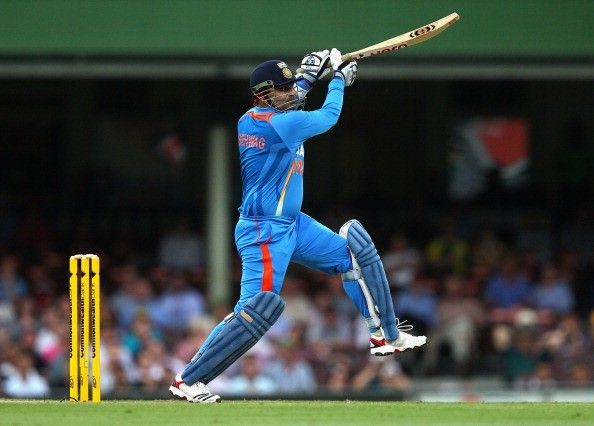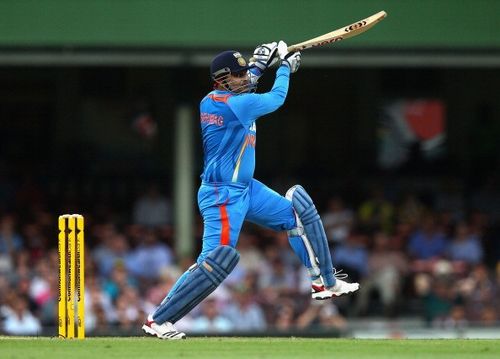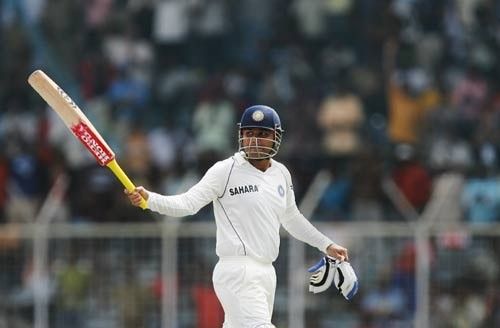
Virender Sehwag - The man who changed the way the game was supposed to be played

I remember, vaguely, my grandfather lauding someone on the television. I was about 10 years old and didn’t understand the reason of his adulation from the adjacent room. So I ran to the drawing room to check out what the matter was.
Between the TV and me stood a host of people including my maternal uncles and other kids from the neighbourhood. Times were better back then—everybody gathered at one spot to watch the game. The divided opinions, the collected hoorahs, so many cups of tea and biscuits… those days were special.
And amidst that, something even more special was in the making.
“Who is this guy? He resembles Sachin [Tendulkar] so much,” quipped my now-late grandfather. He was an avid, almost crazy, fan of the Indian cricket team and he absolutely adored Sachin Tendulkar. So when his eye fell on a guy with similar stature and stance to the Little Master, he instantly fell in awe.
By the time the last ball of the 23rd over was bowled, India were already at 143—something that was considered as outstanding during that era—and only needed 122 runs in the next 27 overs chasing a tricky target of 265.
The many emotions of watching a Sehwag innings
The New Zealanders had batted well. Considerably well, given that back in those days, teams eyed a total of 220-250 as being competitive. A century from Nathan Astle, followed by a supportive 66 from Stephen Fleming and a brisk innings of 45 from Lou Vincent, helped the Kiwis post a target of 265 for Indians to chase.
Not many in the room gave India a chance, after all the target was too big for a team without Sachin Tendulkar.
But by the time India blazed towards 143 for no loss, we knew that there was a chance—and that this was the onset of an exceptional player, someone who would change the way the game was played. As we were all glued to the TV in anticipation of boundaries, Virender Sehwag broke our hearts when he dragged the ball to the stumps with an inside-edge off Craig McMillan’s bowling.
However, it wasn’t before he had smashed a 69 ball 100—his first ever in ODI cricket and one of the most glorious ones he ever played.
What was even more astonishing was the fact that he had scored 70% of India’s runs. Ganguly, on the other end, was just on 40 and the team total was the aforementioned 143.
This was typical Sehwag, something he continuously did over the next decade or so.
India went on to win the game with 26 balls remaining and marched to the final of the tournament to play against Sri Lanka. It was this game against New Zealand where Sehwag blew the trumpets and introduced himself to the world.
All in or nothing – How Sehwag’s attitude changed the sport
Before he arrived on the scene, playing the first 15 overs of fielding restrictions out at 4 runs-per-over without losing any wickets was deemed as success by teams. After he stamped his authority in the game, however, 100 runs in that period became the norm.
And his influence wasn’t only confined to the borders of India. Other teams followed suit. Soon, making the maximum use of fielding restrictions was the target with which openers went on to the pitch. What Sanath Jayasuriya began in the late 90s, Virender Sehwag enhanced in the early 2000s—and fans were entertained more due to it.
It wasn’t as if he was a specialist in limited overs cricket. In fact, it was quite the contrary. His stats reveal how good a player he was in Tests—it was his stage and he was bowlers’ bete noire. Where players hit at 45-60 runs per 100 balls, he went about his innings at a strike-rate of a little over 82.
Even in Tests, the usual 2.5 to 3 runs per over seemed slow after he came to the scenario. India, with him on crease, were playing at 4 to 5 runs an over—and other teams followed suit.
He never really cared about the custom. Sticking to traditions wasn’t in his book. He was here to change them all, to break the shackles and show the world that to do something extraordinary, we have to go beyond the box of conformities.
And he did that. My, oh my, he did that—and in such a spectacular fashion. Be it scoring two triple hundreds in Tests—309 at Multan against Pakistan and 319 in just 275 balls against South Africa—or that devastating ODI double century against West Indies, he did it all with vehemence.

With Virender Sehwag, it was all in or nothing. He never compromised. Never. And it was this attitude that cost him his wicket while he was batting at 195 against Australia. After smacking the previous ball for a six to reach 195, he went for it again and failed.
He was criticized a lot for his gung-ho approach, but that was what made him Virender Sehwag—the man who changed the dimensions of how the game was supposed to be played.